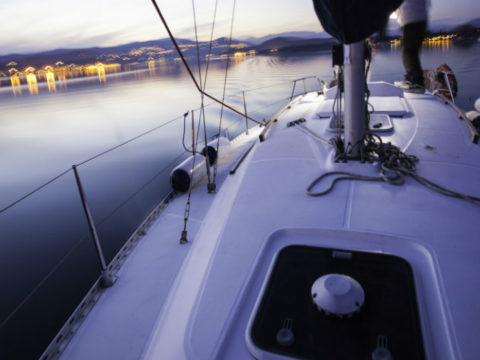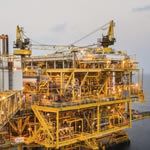A sailing trip from Dieppe to Boulogne ended badly for Richard Brown and his wife, when a fishing trawler collided with their Hallberg-Rassy 36. Forced to anchor in the outer harbour amid gale force 9 winds, the pair had dutifully put on their anchor light and kept the harbour master informed of their location, so what had gone wrong?
Together they were towed, unscathed into the inner harbour, with only superficial damage to their vessel, but head-on collision could easily have made the circumstances much worse.
As a Seamanship expert, Bill Anderson is well placed to offer some insight as to why there was a collision, and what further actions could be taken to avoid one, as he explains to Yachting Monthly.
Impaired night vision “A single white light 15 metres or so above deck is not ideal, as skippers tend to look ahead rather than up. The fishing boat had just left an area of quite high ambient light, which might have helped her skipper to see the anchored yacht but won’t have done much for his night vision.”
Insufficient lighting “The Colregs seems to acknowledge that white anchor lights are sometimes insufficient. Rule 30(c) says that ‘A vessel at anchor may, and a vessel of 100 metres and more in length shall, also use the available working or equivalent lights to illuminate her decks’,” he said.
“Deck working lights, fitted on the underside of spreaders or below the steaming light, used to be quite standard equipment but they seem to have gone out of fashion, a side effect perhaps of furling headsails and reefing lines led aft to the cockpit. They were extremely useful, and perfectly legal, as additional illumination when at anchor, particularly in areas with much brighter lights along the shore.”
Anchor watch “If you don’t have deck working lights and have to anchor very close to a busy fairway, the best defence would probably be an anchor watch with a powerful torch. How easy it is to be wise after the event!”
Talk to us today about your yacht insurance.





